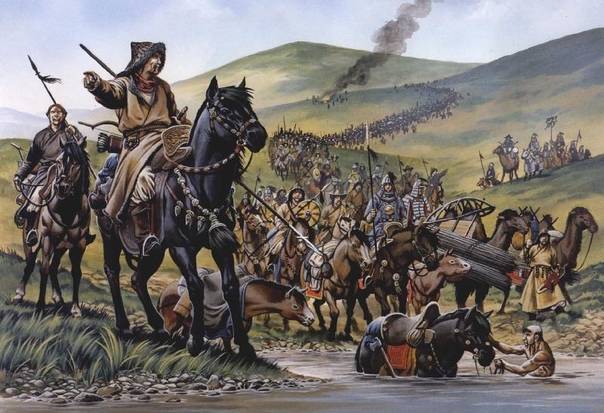The South Slavs settled in the Balkans.
南斯拉夫人定居在巴爾干地區。
They came under the rule in the direct cultural influence of the Eastern Roman or Byzantine Empire.
他們直接受到東羅馬或者拜占庭帝國的文化影響。
The Eastern Slavs settled in modern day Russia, Ukraine and Belarus.
東斯拉夫人定居在今天的俄羅斯烏克蘭和白俄羅斯。
Unlike the West Slavs and South Slavs,
不像西南斯拉夫人和南斯拉夫人,
The East Slavs were little influenced by either the Eastern or Western Roman Empire.
東南斯拉夫人幾乎沒有受到東西羅馬帝國的影響
Instead the East Slavs developed a unique culture known first as the Russ culture.
東斯拉夫人發展了一個獨特的文化,就是最初的基輔羅斯文化。
And only then afterwards as the Russian culture.
也就是后來的俄羅斯文化。
Originally hunters and traders the East Slavs benefitted from their closeness to a network of rivers.
起初獵人和商人東斯拉夫人得益于鄰近水路網。

Which knit them together like a natural highway system.
他們編織成一個天然的高速路系統。
Eventually this river network was also used for trade by Byzantium and the peoples of the Baltic Sea.
最終水路網用于拜占庭的貿易以及波羅的海地區的人們。
Paradoxically the story of Russ begins not in modern day Russia but in Kiev, capital of the modern Ukraine.
矛盾的是俄羅斯并不是起源于現在的俄國而是在基輔,現在烏克蘭的首都。
We've already learned that a group of old norse men known as Vikings.
我們已經了解到古斯堪的納維亞人也稱為維京人。
Had reached the North East coast of modern Canada around 1000 AD.
他們就到達現在加拿大的北部和東部大約公元1000年。
But the Vikings didn't just sail the West looking for a few good cities to pillage.
但是維京人沒有向西航行尋找好的城市。
A Viking group called the Varagians had already been looking at cities and peoples located towards the South East.
維京人的一支名為瓦良格已經注意到了坐落在東南部的城市和那里的民族。











